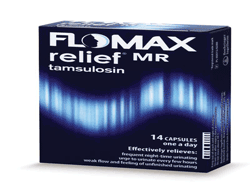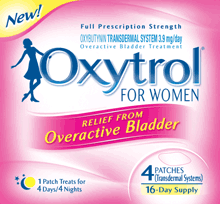Oxytrol, Flomax Switches Show Gap Between U.S., U.K. Pathways
This article was originally published in The Tan Sheet
Executive Summary
EU centralized switch has proven difficult, with only two drugs making the transition from Rx to OTC in the European Medicines Agency process, and EU member state switches also remain complex. Boehringer’s Flomax U.K. switch and Merck’s Oxytrol for Women in the U.S. underscore differences in the regulatory paths.
Few drug manufacturers interested in moving Rx drugs to OTC have embraced the European Union’s centralized switch process due to its technical challenges and delays, but firms also find the switch environment in individual EU member states difficult to navigate compared with the U.S.
“Europe is an environment that is complex, it poses regulatory hurdles and it offers slow industry growth,” says Roger Scarlett-Smith, president of GlaxoSmithKline PLC Consumer Healthcare Europe.
The U.K. switch of Boehringer Ingelheim GMBH’s Flomax Relief MR for benign prostatic hyperplasia in 2010 and Merck & Co. Inc.’s U.S. switch of Oxytrol for Women indicated for overactive bladder in January 2013 provide examples of the different chances for approval and market success that Rx-to-OTC switches have in the two countries.
At the AESGP (Association of the European Self-Medication Industry) annual meeting in Lisbon, Portugal, on June 6, Scarlett-Smith noted pharma firms hope for regulatory changes to improve the switch outlook included in the corporate responsibility initiative European Commission VP Antonio Tajani launched in 2010.
The initiative intends to improve trust between firms and other health care stakeholders through non-legislative measures that strengthen the sector and lead to new developments through the exchange of best practices. Tajani, the EC’s enterprise and industry chief, plans to publish the initiative report with the end of current EC members’ five-year terms in 2015 (Also see "GSK Urges Regulatory Changes To Pull EU Market From Doldrums" - Pink Sheet, 4 Jul, 2011.).
“Some draft recommendations in it are indicating clarity in the way forward in terms of elements for a successful switch,” Scarlett-Smith said.
In the meantime, though, switch figures in Europe remain disappointing. Only two switches have made it through the European Medicines Agency’s centralized process – GSK’s alli (orlistat) for weight loss in 2008 and Nycomed’s (now part of Takeda Pharmaceutical Co. Ltd.) Pantoloc Control (pantoprazole) proton pump inhibitor in 2009 (Also see "Nycomed Prepares To Launch First Nonprescription PPI With EU-Wide Approval" - Pink Sheet, 18 May, 2009.).
Further evidence of the disparate OTC market around the EU is only five of the 63 active ingredients approved for OTCs by EMA or by individual EU members are available in all member states.
“That shows that we really are very far from a level playing field in Europe and the dream of a single market in OTC is extremely far from being a reality,” Scarlett-Smith said.
Regulatory, Cultural Impediments Slow Flomax
Paul Carter, Boehringer’s global head for consumer health care development, medicine and regulatory affairs, illustrated the complexity of a single member state’s switch process through a case study of the company’s experience in the U.K. with Flomax Relief MR (tamsulosin) for benign prostatic hyperplasia. Flomax switched from Rx to pharmacy nonprescription through the country’s Medicines and Healthcare Products Regulatory Agency (Also see "Boehringer Launches Switched Flomax Relief MR For BPH In U.K." - Pink Sheet, 5 Apr, 2010.).
“Like the Titanic, Flomax has been on a very long and arduous journey. But unlike the Titanic, Flomax hasn’t just hit one iceberg, it has hit a number of icebergs along the way,” Carter said.

Flomax Relief MR
Image courtesy of Boehringer Ingelheim
Boehringer needed four years to navigate the regulatory switch process. “This is because it had to take into account all the various interests: doctors’, pharmacists’, consumers’. Everyone who could possibly be involved was involved in the process,” Carter explained.
With some 1 million to 3 million U.K. men experiencing symptoms of BPH, Boehringer anticipated a consumer health care product winner. But even though Flomax TV advertisement won awards, sales of the product have not met the firm’s expectations, likely due to the nature of the disease and the targeted consumers’ attitudes.
The target marketed for the product – men 45 to 75 years old – are consumers likely to attribute BPH symptoms to age and less likely to know whether they have the condition.
“They do not really recognize that they have a problem until it becomes very serious – they do nothing,” Carter noted.
The ad campaign for Flomax targeted making men aware of the issue and informing them a nonprescription solution is available. “It worked to some extent, but not as well as we would have liked,” he said.
One likely obstacle to Flomax sales is that the targeted consumers typically are not inclined to visit a pharmacy and ask for the drug. They might feel embarrassed asking for the product and are inconvenienced by having to complete a questionnaire on the condition required in MHRA’s switch approval.
The questionnaire is a safeguard to check whether a man really needs the drug and to instruct on use of the product. Completing the form should take on average 15 minutes, quite long for both the patient and pharmacist, Carter noted. And depending on the answers, a pharmacist could decline to sell a consumer the product.
Consumers Prefer Rx Flomax Option
A consumer’s first Flomax purchase is limited to a two-week supply. If he returns to the pharmacist and reports the medicine was successful in treating the condition, he can buy a 28-day supply; if the results are not satisfactory, he is advised to see a doctor.
Consumers who ask a doctor about the condition likely will be prescribed a drug, Carter explained. “There is an expectation there that drives both the doctor and the patient to move away from an OTC and self-care environment into a prescription environment,” he said.
Another problem for Boehringer is many men in the target age range will get an Rx BPH product, including Flomax, at no cost to them. There is no financial incentive for a U.K. patient to use OTC Flomax when it is available Rx in the same version.
“As long as this product is available Rx, it is going to be very difficult to make it a success,” Carter said.
According to the protocol, consumers who opt for the OTC product should return to see the doctor within a year for a reassessment.
Boehringer’s OTC Flomax experience raises a significant question for other U.K. switch prospects – if a product remains available Rx after transitioning to OTC, will consumer product sales ever be successful?
“Of course, if we have a complicated regulatory procedure and a complex protocol resulted from that, I do not believe that is in anyone’s interests, least of all the patient’s,” said Carter.
OTC Oxytrol Mines Large Market
Merck’s experience in the U.S. with Oxytrol for Women for overactive bladder, on the other hand, demonstrates how the confluence of market conditions, consumer research and the health care landscape resulted in a successful switch program.
The company has high hopes for Oxytrol sales once the OTC launches in September 2013. Nancy Miller-Rich, Merck Consumer Care group VP for new ventures and strategic commercial development, pointed out that 11 of top 15 OTC products in the U.S. are switch products.
FDA approval of the Oxytrol for Women (oxybutynin transdermal system 3.9 mg) switch came at the end of an extensive and well-planned process for Merck, which licensed the drug’s OTC rights from Allergan PLC – formerly Watson Pharmaceuticals Inc. (Also see "Merck’s Oxytrol Could Be OTC Trailblazer For Chronic Conditions" - Pink Sheet, 11 Mar, 2013.).
The company initiated 11 studies, including behavioral studies to show women could self-select and use a drug safely in the OAB area. Merck noted patients were managing the condition in a number of ways – sanitary protection, limiting fluid intake and using Rx products. Working with FDA, the company established that OAB in women was better suited to self-care than the same condition in men.

Oxytrol for Women
Image courtesy of Merck
“We had to know that at the end of the day we had a product that had a significant value proposition to the consumer, but also created shareholder value,” Miller-Rich said.
With Oxytrol for Women, Merck saw an underdeveloped market. “About 3 million people were going to the doctor, but there were 33 million sufferers,” Miller-Rich noted.
Another striking aspect about Oxytrol for Women is its transdermal delivery format. Merck proved an oxybutynin patch had a much lower frequency of side effects than other drug formulations.
“We knew that conditions such as dry mouth and constipations were particularly bothersome. So we knew that if we could find a target that had very low incidence … we were going to have a winner,” Miller-Rich said.
The duration of action of Oxytrol for Women – four days and nights – also exceeded that of oral products, which are administered up to four times per day.
Building A Compelling Proposal
“We needed to develop a compelling and data-driven story to convince stakeholders who would have a say in this,” said Ed Hemwall, Merck’s research and development leader for Rx-to-OTC switch.
Merck created an advisory board with urologists, women’s health specialists, pharmacists, reproductive health specialists and, because there was concern the condition could be confused with urinary tract illnesses, infective disease specialists.
Working with the advisory board, Merck developed a fully understandable label and embarked on an actual use study.
“The real goal of a use study is not so much to find out if the right consumers are using the product, but what are they doing when they are using the product? Do they know when to stop using the product or continue using the product and see a doctor?” Hemwall said.
Filtering these answers allowed Merck to arrive at a reasonable expectation for safe use in an OTC setting.
Watson reported positive results from phase III studies on the drug. “But they showed improvement, not a cure, so we had to make quality of life [as a] benefit come through” to FDA, Hemwall said.
A key to the success of Oxytrol for Women’s switch in the U.S. was FDA acceptance of an incremental risk of OTC use in order to realize the benefits the drug offers. However, in Europe the increased focus on risk – perhaps even at the expense of benefit – means that regulatory agencies are not quite as prepared to guide drugs down the OTC route.
Another aspect in Oxytrol for Women’s favor is accessibility on shelves, rather than from a pharmacist. OTC access ensured that consumers buying the product in the U.S could avoid the same embarrassment and inconvenience felt by OTC Flomax customers in the U.K. Additionally, Oxytrol for Women has an edge over a male OAB product – women are more likely than men to take direct care of their health.
Following Merck’s launch of Oxytrol for Women, Actavis will continue marketing Oxytrol Rx to men, for whom diagnosing OAB is more complicated.